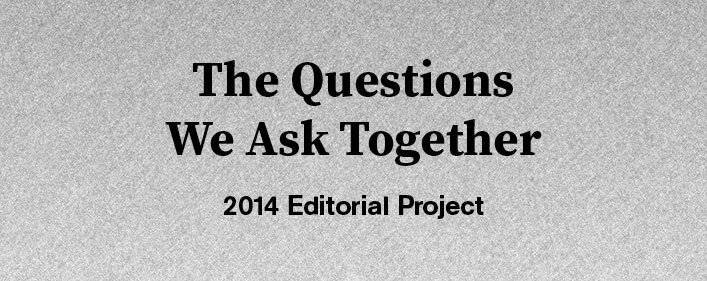What is the role of imagination and charisma in this work?
“We hung from a thread just to prove poetry undead.
We rendered ourselves perfectly suitable to public consumption.
Once again, you’ve mistaken the minerals for cures,
Confused the catechism with your chores.
My aim is only true when I’m aiming at you!”
– Destroyer, 2000
It’s 2014 and I am sitting by the window in my Vancouver bedroom thinking through catechisms and chores, charisma and cures. I am trying to re-live a moment from 2001 when I was sitting by the window, in my Halifax bedroom, reading The Subversive Imagination and listening to Destroyer’s album Thief simultaneously. (Specifically Carol Becker’s essay ‘Herbert Marcuse and the Subversive Potential of Art’ and Dan Bejar’s lyrics for ‘Queen of Languages’).
I remember this experience as an ecstatic one, where my questions about wanting to be an artist and activist found initial relief in Carol Becker’s framing of Marcuse’s thoughts on aesthetics. His insistence on the power of the imagination (and the dangers of ready assimilation), found perfect punctuation in Destroyer’s words. Though there are some clear limits to the ways Marcuse understands freedom and subversion, he unearthed some nuggets of promise for me, as paraphrased by Becker:
“What is almost unspeakable, what cannot be contained, is allowed to live through the form of art. This is why at times art is perceived as subversive, not simply because it presents a world that appears immoral or licentious, as is frequently thought, but because it reminds people of what has been buried – desires their deepest selves dream but cannot manifest within the existing system.”[1]
It is amazing to think about catechisms in the midst of a blog of questions and answers about social practice, (and I am grateful to be here with all of you). If we were to extend a definition of catechism away from religion, and more generally towards doctrine, what would we identify as the catechisms of our discipline? What’s rote in our understanding of social practice’s purpose? What are the catechisms of activism, high art, mass culture and what are our chores (responsibilities), for thinking through them? If social practice is at odds with parts of activist/high/mass cultures, can the antidote to predictable forms of resistance be found in our subversive imaginations?”
Whether we are musicians resisting the music industry or artists manoeuvring in and outside of the art industry, I want to (for right now), emphasize the power of the poetic over the palatable. Join me on the hanging thread where the free imagination is way more charismatic than appealing to the masses. Let our critiques be rooted in the absurdity and magic of our imaginations. Let us resist oppressive structures by resisting the crutch of absolute understanding and logical lock-down.
OE blog, thanks for the opportunity to aim true with you.
Pumpkin Boat Model for Outdoor Education by Hannah Jickling. Nehelem Bay, Oregon, 2009. Photo: Hannah Jickling.
[1] Destroyer (2000). Queen of Languages. On Thief. [CD]. USA
[2] Becker, C. (1994). Herbert Marcuse and the Subversive Potential of Art. In The Subversive imagination: Artists, society, and social responsibility. New York: Routledge.
About the contributor: Hannah Jickling experiments with the possibilities of form, participation and meaning-making across disciplines and publics. Her projects often take shape as site-specific sculptures, public installations, events, exchanges, photographs, multiples, printed matter and other ephemera. Atypical forms of distribution, entrepreneurial scheming and audience-seeking are important strategies for supporting and disseminating her work. Hannah currently lives in Vancouver and teaches at the Emily Carr University of Art + Design. hannahjickling.com
